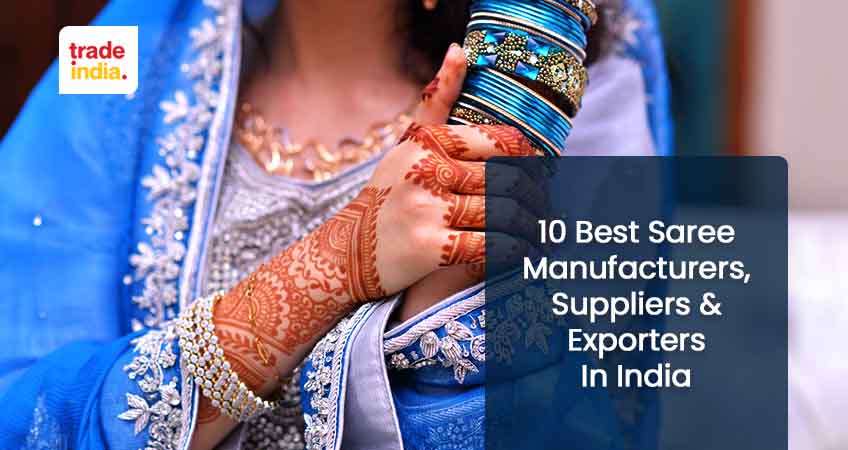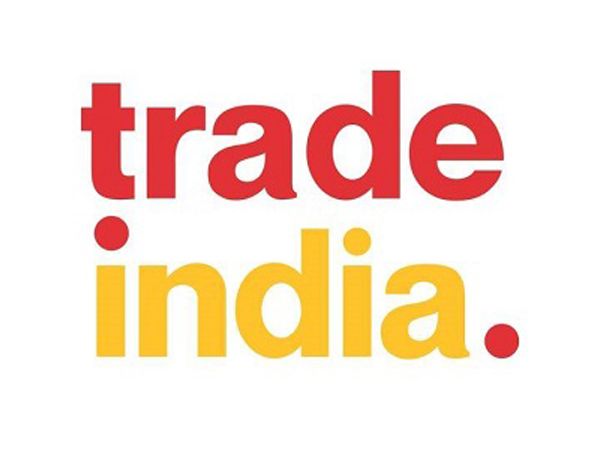Top 10 Saree Manufacturers in India - Latest 2024

Saree, which is currently a popular garment, began as a simple drape worn by women about hundreds of years ago. The drape, or just a fabric akin to the Saree, flourished in northwestern India between 2800 and 1800 BC.
The First Steps
Cotton, initially cultivated within the Indian subcontinent during the 5th millennium BC, began Saree's voyage. Cotton weaving grew widespread throughout the period. Weavers began employing standard colours like red, indigo, red madder, lac, and turmeric to create the drapes that ladies used to conceal their modesty.
The Name
Early Buddhist and Jain literature reference the garment derived from the colloquial word 'sattika,' which implies women's apparel. The Antriya, or lower garment, the Uttariya, or veil draped over the shoulder or head, and the Stanapatta, or chest band, were all part of the Sattika outfit. This collection may be traced back to Sanskrit and Buddhist Pali writings from the sixth century BC.
Antriya looked like a dhoti or a Saree tied in a fishtail way. It evolved into the Bhairnivasani skirt, also known as the ghagra or lehenga. The regional handloom Sarees were historically worn by women, composed of cotton, silk, ikkat, block-print, embroidery, and tie-dye fabrics. “Banarasi, Maheshwari, Mekhela, Kanchipuram, Gadwal, Uppada, Paithani, Chanderi, Ghicha, Bagalpuri, Narayan pet, Mysore, Balchuri, , and Eri” are among the most popular brocade silk sarees.
Evolution
Years later, with the arrival of foreigners, wealthy Indian ladies began to request that craftspeople utilize precious stones and gold threads to create distinctive Sarees for the stratum, allowing them to stand apart. However, as a garment, the Saree remained impartial and was altered by each stratum in its unique style.
Types of Sarees in India
A saree's elegance is unparalleled, so we all like this fantastic garment. Depending on India's many varieties of sarees, the bare nine yards of draping can be fashioned and designed in multiple ways. So, let us have a look at the different types of sarees offered by various saree manufacturers, suppliers & exporters in India.
1. Tamil Nadu's Kanjeevaram Saree
Kanjeevaram Saree has an elaborate air because of its vibrant colours, regal borders, and luxurious silk. Kanjeevaram is a traditional wedding saree from Tamil Nadu that has become popular among the masses for special occasions. The sarees are made of fine mulberry silk thread and have intrinsic beauty and grace. The sarees are embellished with a characteristic gold tint. Kanjeevaram also creates religious themes based on legendary tales and temples. A Kanjeevaram saree's pallu is frequently a contrast hue, providing depth to the drape's texture.
2. Maharashtra's Nauvari Saree
The Nauvari is indeed a classic Indian saree from the west coast of India. This saree gets it's derived from the notion that it must be nine yards long. Nauvari is draped using the "kashta" style, wherein the saree's border is pulled in from the back.
3. Gujarat’s Bandhani Saree
Bandhani patterned saree comes from Gujarat. Bandhani Sarees are available in a range of hues and patterns, but they all have the same age-old belief: they offer the bride good luck and a bright future. A Bandhani Saree is made in a complicated process that includes hand dyeing. Bandhani’s are a tasty ethnic saree that conjures up thoughts of Gujarati and Rajasthani heritage.
4. Tant from West Bengal
The Tant Saree distinguishes out amongst India's myriad saree variants. This red and white Bengali saree exudes beauty. Every Bengali woman must wear a saree. Tant is constructed of breathable material, making it suitable for hot weather.
5. Varanasi’s Benarasi
The Banarasi Saree is amongst the most popular of the several styles of sarees produced by various states. These silk sarees are famous for their designs and motifs from Varanasi.
6. Lucknow’s Chikankari
Chikankari sarees from Lucknow are stunning in themselves, but the gorgeous embellishments elevate them even more. Such sarees, with exquisite embroidery in soothing colours, may be worn at any time of year or for any event. To gain everyone's attention, one must trust and put on the magnificent Chikankari.
7. Odisha’s Bomkai
Bomkai sarees are a type of handloom saree that originated in Odisha and are hand-loomed. Although the motifs on this saree appear to be fresh, they are deeply rooted in the state's traditions.
8. MP’s Chandheri
The fabric is light as air because the zari and silk are interwoven with cotton. The opulent texture of Chanderi Saree makes it ideal for parties and celebrations.
9. Kerala’s Kasavu
Kasavu was formerly a dhoti, blouse and just a stone thrown across it, but it has evolved into the current elegant saree. The white saree with golden borders, occasionally stitched with genuine gold, is breathtaking.
10. Muga from Assam
The many varieties of sarees offered in the market have a glossy shine and are incredibly durable silk. The saree is indeed a sight to behold, with a beautiful goldish color. This popular saree is a popular choice for weddings or other special events. Muga is one of the most expensive silks, yet its sheen enhances each wash, making it ageless.
11. Punjab’s Phulkari
Phulkari is a form of traditional Punjabi embroidery that creates beautiful motifs. Phulkari sarees feature flowers, designs, and even geometric themes. The elaborate ornamentation of a Phulkari saree is created by darn stitching on the rough face of the fabric. Phulkari designs are highly enticing due to the brightly colored material utilized.
Read More: Top 10 Silk Saree Manufacturing Companies in India
Top 10 Saree Manufacturers in India
1. Unique Weaves and Blocks:
Being one of the leading Saree Manufacturers in India, they have been making Chanderi handloom and block pattern sarees since 2010. They do it in partnership with Chanderi skilled weavers, who specialize in creating high-end Indian handlooms. Chanderi sarees are made from three different types of fabric: Chanderi cotton, pure silk, and Silk cotton.
2. Ajmera Fashion:
Ajmera Fashion, based in Surat, is an established saree manufacturer. They offer their products in over 20 countries. It becomes possible to get Wholesale Saree Market at the best rates.
3. Sakshi Handloom:
Sambalpuri Sarees are made here. Traditional themes influenced by Lord Jagannath have made Sambalpuri sarees popular worldwide. These sarees are a reflection of Odisha's rich and colorful history. Cotton and silk are the most frequent materials used in sarees. With only three looms, they began manufacturing saree designs in 1991. Hundreds of various Sambalpuri sarees are presently produced.
4. Yadu Nandan Fashion:
Surat-based silk saree producer and wholesaler Yadu Nandan Fashion. Their adventure began in 2012, and ever since, they have provided and dedicated to thousands of clients who, in turn, present their gorgeous, genuine, and unique ethnic wear assortment to thousands of consumers every day across India.
5. Kanchipuram Lakshya Sarees:
They are amongst the leading suppliers of Kanchipuram silk sarees and are based in Tamil Nadu. They are known for producing some of the best sarees in the state. In Tamil Nadu, there are over a thousand handloom weavers. Saree producers in Kolkata, Chennai, Delhi, Mumbai, and others sell the sarees.
6. Maheshwari Handloom Works:
Maheshwari Handloom Works is situated in Maheshwari, around 100 kilometres from Indore. They started the company in 2016. They are the authorised makers and sellers of Maheshwari Sarees, Printed Dupattas, and other Maheshwari items.
7. Indian Women Fashion Pvt. Ltd.:
Saree producers, distributors, and exporters, Indian Women's Fashion was started in 2008. They have a consistent revenue stream and are prevalent in India. Before being sold, the sarees are always put under rigorous testing. They have built a complex and very advanced infrastructure division and all the cutting-edge technology and tools required to manufacture the products they sell.
8. Artisan GI:
They manufacture authentic Banarasi sarees and sell them at wholesale prices. Artisan GI employs impoverished weavers. This industry's weavers often sell their crafts to intermediaries for a portion of the asset's actual worth. Artisan GI has been on a quest to disrupt this vicious spiral by hiring weavers directly and paying them fairly. Banarasi saree is weaved with various coloured threads, resulting in a wide range of textures, patterns, and colours. The richness of the many colours contributes significantly to the sarees' popularity.
9. Apple Sarees Pvt. Ltd.:
The company was founded in 2004 and is based in Surat, Gujarat, India. They are an established brand of Saree Manufacturers in the industry. They have eight sites in India and offer an excellent assortment of sarees at moderate prices.
10. Ranka Silks:
Another significant saree manufacturer is Ranka Silk, situated in Coimbatore. They feature a vast assortment of Silk Sarees, both classic and contemporary. There are sarees for about every event in their collection. They are seeking to keep the traditional saree-making technique sacred.
Synthetic dyes began their formal introduction into India with the arrival of industry and the British. Local business people began importing artificial dyes from other nations and hitherto undiscovered printing and dyeing processes, giving Indian Sarees an unprecedented level of variation. The evolution of fabrics in India began to show in the patterns of Sarees, which started to include figures, motifs, and flowers. The saree would become the first Indian worldwide garment as foreign influence grew. With the best Wholesale Saree Market, it becomes possible to save a lot of money. What began as India's first flawless garment has evolved into a symbol of Indian womanhood.
FAQs: Saree
Q. How many materials are used for manufacturing Sarees?
Ans: There are more than 30 materials that are used in manufacturing sarees, these materials are available all over India and various states across the country use different types of materials.
Q. Which city is the most famous when it comes to sarees?
Ans: Kanchipuram is a city within the state of Tamil Nadu in India and it is quite famous for weaving silk sarees. There are approximately 5000 families that are associated with the saree business within the city.
Q. How many variants of silk sarees are found in India?
Ans: There are around 26 variants of silk sarees that are available in India, namely Assam Silk, Baluchari Silk, Bomkai Silk, Banarasi Silk, and many more.
Explore More :
